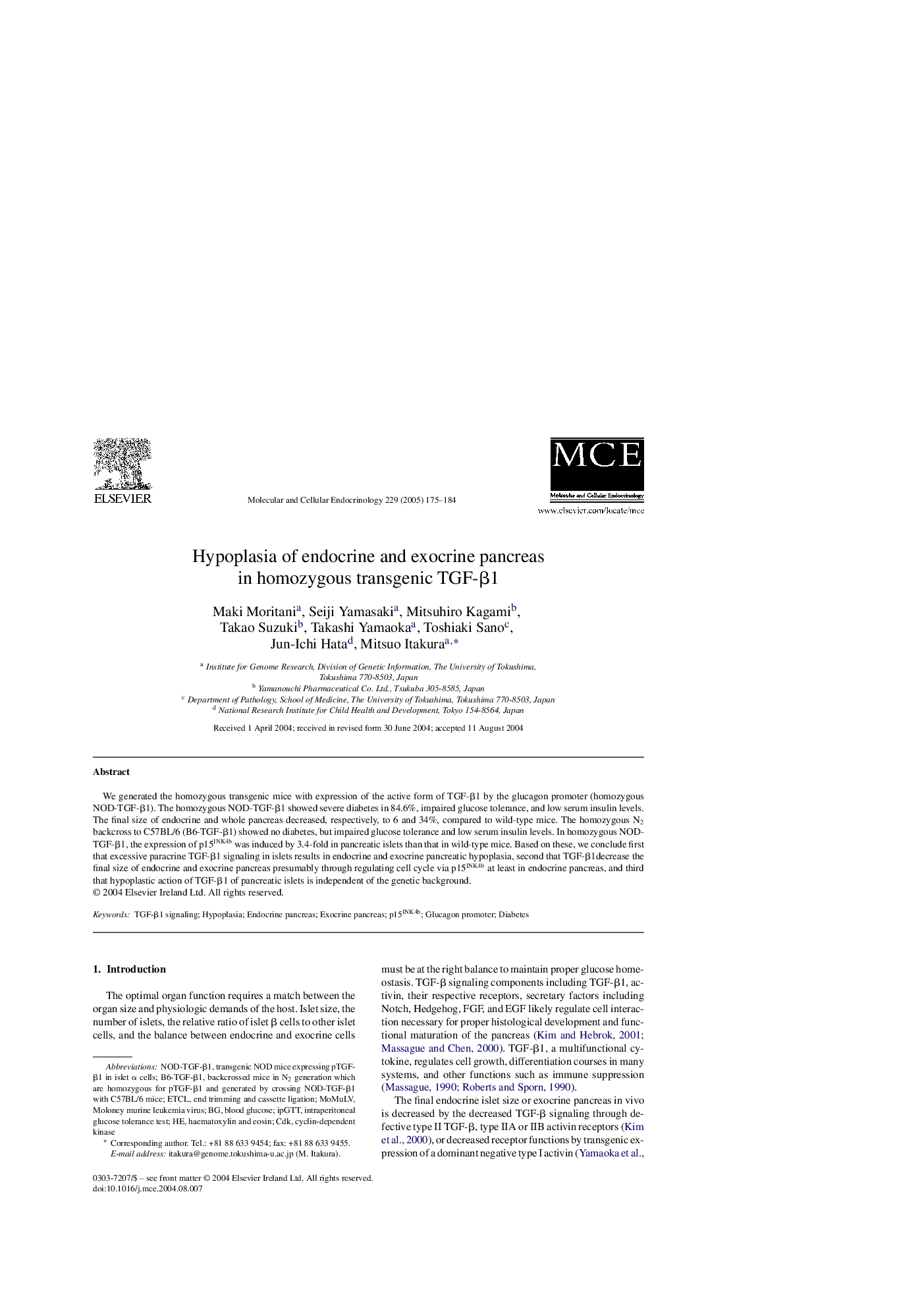| Article ID | Journal | Published Year | Pages | File Type |
|---|---|---|---|---|
| 9915061 | Molecular and Cellular Endocrinology | 2005 | 10 Pages |
Abstract
We generated the homozygous transgenic mice with expression of the active form of TGF-β1 by the glucagon promoter (homozygous NOD-TGF-β1). The homozygous NOD-TGF-β1 showed severe diabetes in 84.6%, impaired glucose tolerance, and low serum insulin levels. The final size of endocrine and whole pancreas decreased, respectively, to 6 and 34%, compared to wild-type mice. The homozygous N2 backcross to C57BL/6 (B6-TGF-β1) showed no diabetes, but impaired glucose tolerance and low serum insulin levels. In homozygous NOD-TGF-β1, the expression of p15INK4b was induced by 3.4-fold in pancreatic islets than that in wild-type mice. Based on these, we conclude first that excessive paracrine TGF-β1 signaling in islets results in endocrine and exocrine pancreatic hypoplasia, second that TGF-β1decrease the final size of endocrine and exocrine pancreas presumably through regulating cell cycle via p15INK4b at least in endocrine pancreas, and third that hypoplastic action of TGF-β1 of pancreatic islets is independent of the genetic background.
Keywords
Related Topics
Life Sciences
Biochemistry, Genetics and Molecular Biology
Cell Biology
Authors
Maki Moritani, Seiji Yamasaki, Mitsuhiro Kagami, Takao Suzuki, Takashi Yamaoka, Toshiaki Sano, Jun-Ichi Hata, Mitsuo Itakura,
